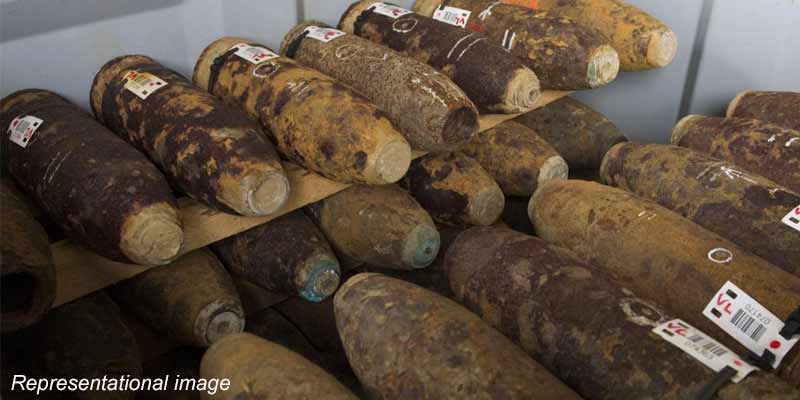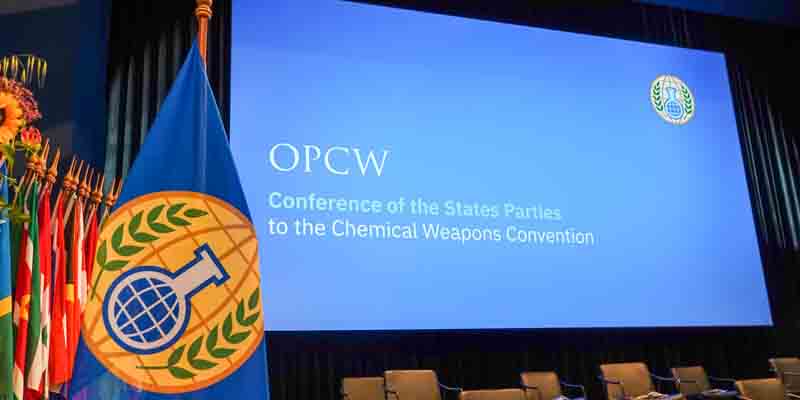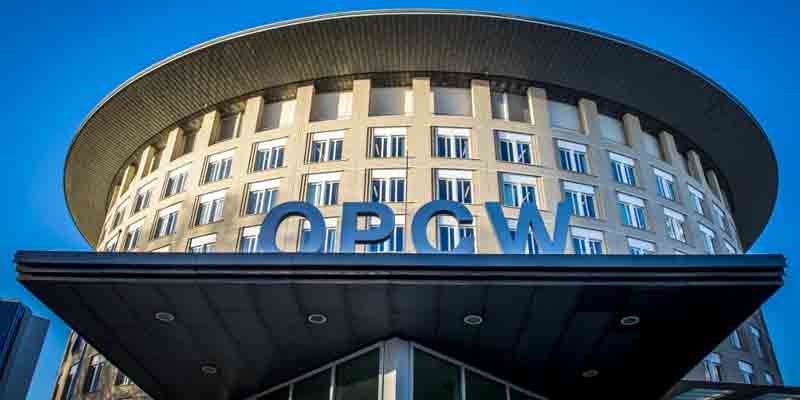- World
- Jul 11
Explainer - Chemical Weapons Convention
• President Joe Biden announced that the United States has fully destroyed its decades-old stockpiles of chemical weapons.
• It brings an end to a decades-long effort to eliminate the deadly weapons first used on a large scale in the First World War.
• The United States was the last of the signatories of the Chemical Weapons Convention, which came into effect in 1997, to complete the task of destroying their “declared” stockpiles.
• As part of the Chemical Weapons Convention, the US and other signatories are required to destroy their chemical weapons stockpile by September 30, 2023.
• The US had held for decades stores of artillery projectiles and rockets that contained mustard gases, VX and sarin nerve agents, and blister agents.
• Such weapons were condemned widely after their use with horrendous results in World War I.
• The US has been destroying its remaining stockpiles at US Army Pueblo Chemical Depot in Pueblo, Colorado, and Blue Grass Army Depot (BGAD) in Richmond, Kentucky.
• In 2022, the last M55 rocket with the VX nerve agent was destroyed at the plant in Kentucky.
• According to the United Nations, chemical weapons killed nearly 100,000 people during World War I and have caused more than one million casualties around the world since then.
Chemical weapons
• Chemical weapons are munitions and other devices which use the toxic effects of chemicals on living organisms to cause death or other harm.
• The CWC includes toxic effects on human beings and animals, and not effects on plants.
• In order to qualify as a chemical weapon, the toxic effect of the munitions must not necessarily be lethal. Other forms of harm (incapacitation) are sufficient even if they are only temporary.
• Toxic chemicals can spread over large areas and affect large numbers of people. Chemical weapons are therefore considered as “weapons of mass destruction”.
The way to the CWC
• The use of chemical weapons during the First World War generated a great shock in public opinion and soon triggered initiatives to ban these weapons, both their use and later their possession.
• These efforts started with the so-called 1919 Paris Peace Treaties which prohibited the possession of such weapons by the States which had lost the war.
• A prohibition of the use of these weapons, based on the language of the Paris Peace Treaties, was first stipulated in the Treaty for the limitation of Naval Armament adopted by the Conference on the Limitation of Armament held in Washington in 1922 and then in the 1925 Protocol for the Prohibition of the Use in War of Asphyxiating, Poisonous or Other Gases, and of Bacteriological Methods of Warfare (known as “the Geneva Protocol”).
• The Geneva Protocol constituted a major breakthrough as it was widely ratified, although it was slow in finally winning real universal participation.
• After the Second World War, it was again the use of chemical weapons, namely, the use of tear gas and herbicides by the United States in the Vietnam War, which triggered new attempts to strengthen their ban.
• A ban on possession of such weapons became part of the arms control negotiations conducted under the aegis of the United Nations.
• However, the negotiations on chemical weapons lasted for many years.
• The major stumbling-block being a compliance system which had to be effective on the one hand, but not too intrusive on the other.
• The Convention on the Prohibition of the Development, Production, Stockpiling and Use of Chemical Weapons and on their Destruction (CWC) was adopted in Geneva on September 3, 1992.
• It entered into force in 1997.
• The CWC is a universal, non-discriminatory, multilateral, disarmament treaty which monitors elimination of chemical weapons.
• As many as 193 countries are parties to the Convention.
• Only three countries Egypt, North Korea and South Sudan have not signed the treaty. A fourth, Israel, has signed but not ratified the treaty.
• India signed the treaty in January 1993. India has enacted the Chemical Weapons Convention Act, 2000.
• India was the first State Party to secure the distinction of chemical weapon-free State Party by destructing all its stockpile of its chemical weapons amongst all State Parties of the Convention.
Organisation for the Prohibition of Chemical Weapons
• The Organisation for the Prohibition of Chemical Weapons (OPCW) is the implementing body for the Chemical Weapons Convention.
• The OPCW, with its 193 Member States, oversees the global endeavour to permanently and verifiably eliminate chemical weapons.
• Since the CWC entered into force in 1997, the OPCW has verified the destruction of 72,304.34 metric tonnes of stockpiled chemical weapons, declared by countries around the world.
• The headquarters of OPCW is situated in The Hague, Netherlands.
• For its extensive efforts in eliminating chemical weapons, the OPCW received the 2013 Nobel Peace Prize.
• OPCW has selected India’s Comptroller and Auditor General (CAG) as its external auditor for a three-year term starting in 2021.
Manorama Yearbook app is now available on Google Play Store and iOS App Store



